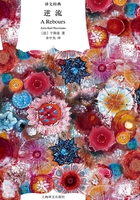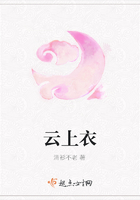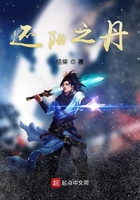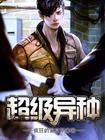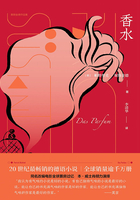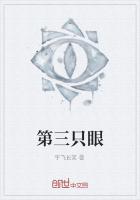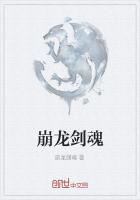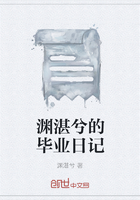W.N .Herbert
1
The Argentinian novelist, Andrés Neuman, had occasion to remark at a literary festival I recently attended in Cardiff, 'Reading poetry is itself a kind of translation.' This idea, that poetry is a medium which brings us all into the realm of the translator, is both challenging and suggestive. It implies that an act of decipherment lies at the heart of the pleasure of poetry, and also that a degree of ability to interpret may be as universal as the poetic act itself.
This anthology began eight years ago with a similar principle - that poets were sufficiently intrigued by the expressive modes and strategies of other poets to find a way of leaping the language barrier in search of greater understanding of each other's practice. The hope was that direct dialogue could lead to meaningful acts of translation, a deeper understanding of both our skills and their cultural relativism, and, ideally, publishable works in the target language.
Practically speaking, this impulse manifested itself in a trip by some UK poets to meet with Chinese writers and work on translations of each other's work in Beijing and the Wansongpu Writers Centre in Shandong Province, then a return trip by the Chinese writers to Cove Park in the west of Scotland. The originating figures were, on the Chinese side, Yang Lian and Tang Xiaodu, together with Xi Chuan, Zhai Yongming, Zhang Wei and Zhou Zan. On the British side, Polly Clark and Julian Forrester organized, and Polly, myself, Antony Dunn and Pascale Petit took part.
On those two trips, translation went on in parallel, with the writers working both from Chinese into English, and from English into Chinese. It was a dialogue in several senses of the word, in that not only were we learning about each other's poetry and its cultural and formal background through the act of translation, but that act was itself dialogic, 'Poet to Poet', as Polly called it.
This was only the first of a series of exchanges, called, variously, the Pamirs, Yellow Mountain and Yangzhou festivals. These included readings and discussions as well as translations, and involved many other writers both British, Chinese, American, Nigerian, and from New Zealand. But at the heart of each of these exchanges was a pair of writers sitting down together and learning about each other's writing and the principles behind it through the act of translation.
Several names recurred, while others joined us, including, on the English-speaking side, Murray Edmond, Forrest Gander, Robert Minhinnick, Sean O’Brien, Odia Ofeimun, Fiona Sampson, Arthur Sze, George Szirtes, Eliot Weinberger and C.D. Wright. Other Chinese writers taking part included Duo Duo, Hu Xudong, Mang Ke, Ouyang Jianghe, Wang Xaoni, Xiao Kaiyou,Yan Li, Yang Xiaobin, Yu Jian, Zang Di and Zhang Er. Not everyone translated, and not all the translations were successful, but the strong impulse to engage in dialogue about poetry drove us all.
These are distinguished names, and both the dialogues and the translation processes were so stimulating, it was inevitable that, eventually, we would think of publishing some of the results. Yang Lian and I had already collaborated on Jade Ladder (Bloodaxe Books, 2012), a comprehensive selection of translations into English of key poems from the last thirty years of Chinese poetry, the idea for which had arisen as a direct result of these festivals and exchanges.
But we were always aware, firstly, that the translation process had gone in both directions, and, secondly, that a large anthology like Jade Ladder could not focus exclusively on that process. So we decided that a second, independent book was necessary: one that included English to Chinese translations alongside Chinese to English, and one that gathered its work primarily from the Poet to Poet translation method.
That method had of course evolved over the years, not least because its application had spread. Yang Lian and other Chinese writers worked with Japanese and other poetries. Polly and Julian developed a similar project with Arab and Israeli writers; and I found myself translating from a number of other languages including Bulgarian, Farsi, Lithuanian, Somali and Turkish.
Poet to Poet changed my practice as a writer and, as an academic, became my main research area. I began travelling to translate, engaging with other organisations like Aberystwyth's Literatures Across Frontiers, Edinburgh's Scottish Poetry Library, and the London-based Poetry Translation Centre; and with other co-translators like Linda France, Richard Gwyn, Martin Orwin and Ze Skoulding.
But both Yang Lian and myself never forgot that there was something unique about the translation process working between Chinese and English, something that informed all the other translation work we subsequently did.
The gap between the two languages and between the two cultures could not have seemed wider - English, obviously, is represented by an alphabetic system which encodes its linguistic and cultural history within its orthography, so that to read it is to reach back through etymology into layers of time.
Chinese, equally evidently, deploys thousands of characters which represent concepts and their interactions spatially through combinations of pictograms and radicals. The same characters can be used by quite distinct languages and pronounced entirely differently, while retaining much the same meaning. This, together with the fact that characters were fixed at such an historically distant time - despite efforts made by the Communist Party to reform and simplify many key characters - means that they can seem almost timeless.
The gap between the two cultures is almost as marked: Western European thinking as exemplified by English and US culture continues to empiricise wherever it can no longer colonise, to be extroverted and individualist. This it does to almost the same extent that Chinese thought has traditionally focused on the phenomenal, while creating an enclosed and hierarchically ordered social system in which China is already a world, complete unto itself.
Chinese literature is at once far more ancient and extensive than literature in English, and far more isolated on the far side of postmodernity, unable to establish easily connections with writers from millennia back, poets everyone has memorized but whose lives seem unimaginably alien. Thanks to those unchanging characters, everyone can read the poetry of the Tang or Song dynasties, but no-one can be entirely certain how it was pronounced.
English literature, on the other hand, manifests its distinct periods through linguistic as well as cultural or formal evolution, regularly requiring itself to be translated into its latest manifestation. Somehow, that familiarity with mutability, with relative equivalences, and with the gaps in meaning that such familiarity both opens up and conceals, gave it a flexibility that seemed fit for the task.
Somehow, when we sat down together to translate - line by line, character by character - the series of gulfs I've just described, each as sheer as the other, caused something rich and paradoxical to happen. For one thing, to discuss the surface of the language was, necessarily, to discuss its depths. For another, English's focus on its music, its long engagement with different modes of metricality, connected with Chinese's love of pattern, and its patterning of centuries of allusion.
The historicizing music of English met the conceptualism of the Chinese character, and English's concept of the poetic encountered Chinese's very distinct tonal music. Each culture was mature enough in a different enough way to match the other technically as well as to contrast teleologically. There was vigorous debate because there could be real exchange: something, we realized with increasing excitement, was at stake.
2
So what was the Poet to Poet method, and how has it evolved over the eight or so years encompassed by this anthology? How specifically did its processes lead to a change in emphasis in how we translated poetry in both directions?
Arguably, the method has its roots in a remark by Pound from 'How To Read', where he states in typically absolute fashion:
Another point miscomprehended by people who are clumsy at languages is that one does not need to learn a whole language in order to understand some one or some dozen poems. It is often enough to understand thoroughly the poem, and every one of the few dozen or few hundred words that compose it.
Poet to Poet translation, then, is one whereby a poet sets out to inform another poet of the full cultural significance of those 'few dozen or few hundred words' from the dubious position of authority of having written them. Literary translation utilising this dialogic method was initially conducted without any preparatory literal or interlinear text, where there was a common language (almost always English).
Later it was also done between poet and poet with an accompanying interpreter, often a skilled translator or poet/translator in their own right. Sometimes, where the original poet could not be present, it was done between poet and translator. In this latter case, which clearly strains the original term, the translator tended - indeed needed - to be not only an expert in the field of literary translation, but also a close contact of the originating author, able to verify their responses through consultation.
In both the latter cases, literals tended to be used, giving rise to complications of their own, which I'll return to later.
However, in all three cases the aim remains to create a publishable text through the dynamic dialogue between writers in source and target language. This changes normal translation procedures in several significant ways.
Firstly, and most importantly, the work is usually selected by the original author. This reverses the procedure, whereby the expert translator selects from the passive canon of a foreign poetry, and thereby it also inverts the hierarchy whereby the selection of the poem can be made according to assumed ease of translation, or for ideological or aesthetic 'fit' with the target culture. Chinese has for a long time been subject to a series of orientalising gestures which this method counters even though we understand it cannot entirely escape them.
This procedure has its hazards - a work may be discovered to be effectively untranslatable, or at any rate less effective in the target language. It often proves to be far harder to translate than either party realized at the outset. But these dangers are outweighed by the benefit of discovering how the originating poet wants to be represented (assuming this was a factor in their selection process - it is still of course possible for the poet to select 'easier' pieces.)
Secondly, the active presence or accessibility of the originating poet allows for a more detailed, more informed and, arguably, more accurate picture of the poem to be constructed. It at least brings out into the open the amount of second guessing any translation process must be filled with, making explicit the degree to which the translator has to consider intention as much as meaning, gesture as much as tone - because the translator can simply ask the author. This is one of those areas that feels very different depending on whether you are the translator or the translated. It is as marvellous to be able just to ask, as it is challenging to have to answer.
Thirdly, the presence of a poet fluent in the target language can mean a high level of discussion about formal issues, with the result thereby achieving more of an agreed equivalence in metrical, imagistic and, where suitable, idiomatic finish. Effectively, the Poet to Poet method allows for a strong engagement with the issue of cultural translation on the level of craft.
These three positive elements allow for an almost unique moment of shared reflection for both originating poet and poet-translator. Many of the questions one is asked as part of this process are not those one asks oneself during composition. Indeed, some such questions may need to be avoided, deliberately or instinctively, in order for composition to take place.
Equally, for the translator, this process may oblige them to reflect upon aspects of their own creative habits and perspectives in a more exteriorized and critical light, to assess whether they are indeed fit for purpose. Both writers are, after all, often encountering the different cultural weight they attach to the same literary technique, mode, or sphere of reference.
This moment in which both parties achieve however partially a conscious perspective on their own poetic procedures and creativity may be seen as a kind of secondary effect of the translation process, but it is one with huge implications for the success of the project. Depending on each party's ability briefly to escape their own milieu the dialogue mode of Poet to Poet allows, indeed causes, change to take place in their approach or practice, and the successful translation is often more dependent on the nature of this change than either party may have allowed.
To be able to let go of the poem or the practice is, effectively, not to impede transmission. This condition is the 'third shore' to which we refer in our title, a place that cannot be completely governed by the poetic customs or cultural tides of either the original or the target languages.
The Scottish poet Hugh MacDiarmid, who often had to negotiate those treacherous crossings between the languages of the British Isles, referred to a similar sanctuary at once of transition and translation when in his long poem, In Memoriam James Joyce, he welcomes Joyce 'to our aonach', conflating two Gaelic words - one for a meeting place or fair, and another meaning a ridge or high place.
The third shore as a point of colloquy between poets and between poetries finds its corollary in his poem 'On a Raised Beach', where the shoreline has been literally lifted above the sealine by eons of geological change, and the stones stranded on this beach symbolise an 'inoppugnable reality' the poet attempts to approach through language, deploying an extraordinary extended range of scientific vocabulary and Shetlandic Norse in an attempt to translate the stones into words:
This cat's cradle of life; this reality volatile yet undetermined;
This intense vibration in the stones
That makes them seem immobile to us …
This kind of intense encounter with what lies within the line, the metre, the image, the tone, the character or the word - with that which may well prove untranslatable - is the goal of the Poet to Poet method.
The very intensity of this dialogue, however, may sometimes contain within it the seeds of its own undoing. There is a temptation for the translated poet, reconsidering his or her own work, to use the translation to develop an idea explored through discussion, i.e. for the translation to become a means of revision. There is a similar temptation on the part of the translating poet to make sense of the poem according to their own instincts and principles, rather than having the patience to allow the meaning and style of the source text to emerge through discussion and redrafting.
This confusion of the fluidity of the draft translation with that of the compositional draft can lead to a kind of folie à deux, in which both poets do what they do best, composing, while believing they are acting in the best interests of the poem. This is why the dialogue is often better chaired by a translator who, like a marriage counselor, can pull both parties back to the text at key moments. It is also why having more than one translating poet means they too can enter into dialogue about stylistic and interpretive issues in the target language, the results of which might be less individual, but they can also be more resistant to personal habit.
The ideal model for the Poet to Poet translation method as it has evolved might therefore be the quadrilogue, consisting of, firstly, the originating poet either present or accessible; secondly, the interpreting or intermediating poet/translator; and, thirdly and fourthly, two poets from the target language. Of course these four roles can be played by just two or three parties, but four allows for the greatest degree of engagement and objectivity.
What this evolutionary process has also given rise to is a more sophisticated understanding of the different roles played by different kinds of preparatory text. Originally, as stated above, there were none: two poets sat down together with a poem selected by the source language poet, and off they set. Gradually, the role of some form of literal translation in order to determine which poems to translate began to seem useful. But this brought its own dangers.
Literals are, naturally, never only that - a literal version of the poem, which enables work to begin. They tend to be, already, versions, often produced by writer-translators with strong aesthetic principles of their own, articulated or not, which mean they have made a series of decisions about how to produce the literal, which they then have to, but may not be in a position to, explain to the target language poet or poets. Therefore, a certain amount of this translation method - especially if the original author is not present or is not fluent in the target language - is spent assessing the literal rather than engaging with the original.
Authors of literals often feel they have already done the hard work because they have the source language expertise or know the original author well, and may have less grasp of the significance of the stage the target language poets are embarking on. It can be difficult to explain that, as is sometimes the case, their version may not be publishable in the target culture, and that an emphasis on dictionary definition or on loyalty to the author can reach a point where it becomes obstructive.
For this reason, poets working in this method often use the literal mainly to help selection, whereupon they embark on the creation of an interlinear - a word-for-word crib, preserving word order, listing synonyms, and noting cultural or stylistic issues as they arise. This construction of the interlinear is achieved specifically by a deconstruction of the literal, and directly engenders the dialogue discussed above.
3
I wrote in the introduction to Jade Ladder about my conviction, gained through working on that book, that translation is a fundamental aspect of any process of dialogue, not just those evidently about a transfer of meanings across languages. The transition from one era to another, from one class to another, from one gender to another, from a memory to the world-view of the present self, each involves us in a type of translation.
This is self-evidently a metaphoric use of the term 'translation', but we must always be alive to the metaphors through which we conceptualise such exchanges. Many of our metaphors for translation tend to contain hierarchical assumptions, from the gendered 'mother tongue' to the idea that meaning can be 'lost' as though it were baggage - or rather merchandise - in transit. And yet there is a more fundamental sense in which translation is itself metaphoric, which has a direct bearing on the processes employed and the choices made by the poets gathered in this anthology.
Translators are often supposed to work in what might be described as a metonymic manner; that is, when seeking equivalences of language, form, image or cultural reference, it is often anticipated that they will seek contiguous ones - synonyms rather than antonyms, syllabics for numbers of characters, images drawn from the same field of reference, and cultural equivalences that appear to be as 'close' as possible.
But it is as often the case that what is being sought are metaphoric equivalences - words, metrics, images, references, which are 'like' the original, but don't necessarily directly correspond. The likeness, as in metaphor, is made implicit by the act of creating a poem in the target language, rather than, say, writing an essay about the original poem. In a sense, the translation is itself a metaphor for the original. In I.A. Richard's terms, the original is the tenor, and the translation is the vehicle.
This relationship is, I think, particularly clear when when we look at translations between English and Chinese. The dynamic between pictogram and meaning in Chinese is often metonymic, for instance the character meaning fresh, '鲜'(‘xiān' in pinyin), consists of an association made from contiguous elements '鱼'and '羊'(‘yú' and 'yáng' in pīnyīn)— the characters for two fresh things, 'fish' and 'sheep'.
By contrast, for the English speaker, 'fresh' delivers its associations by dint of being an Old English monosyllable. That is, whether we are aware of its etymology or not, most English speakers register the directness of the sound and link it to its meaning in a way we might not so readily do with 'neoteric' or 'uncontaminated'. Synonyms in English come from different sources that we don't always recognize as contiguous, and in fact can experience as contrasting.
When we think about the relation between '鲜' and 'fresh' therefore, we are thinking metaphorically about how a spatial relationship between characters can resemble a meaning built up through complementary or contrasting linguistic roots, i.e. a temporal relationship. This is, I believe, what the poet Yu Jian meant when he said at a recent festival in Nanjing, 'The Chinese character cannot be translated.' He didn't mean that a kind of translation did not take place, but rather that translating Chinese makes us think laterally about equivalence itself.
To think of translation as a search for metaphors as much as a search for meanings is to note that likeness may be something subtly different from similarity. Twins can resemble each other exactly but have different natures, while two strangers can contrast in every way while recognizing - or at least agreeing - that they are in some way fundamentally alike.
Translation in this sense is a kind of leap of faith which we can only commit to if trust has been established between translated and translating poets: they must have faith in each other's judgement as poets beyond the limits of their grasp of each other's language and culture. Poet to Poet translation, then, is a relationship rather than an infallible method, one in which we hope to recognize and value likeness.
This recognition of likeness occurred again and again in the creation of this book, as poets in both languages acknowledged that each other's engagement with their culture's politics, history and prosody was not just similar to their own, or not just simplistically operating in parallel, but felt as though it were the same engagement. The evidence was as simple as finding you were as fascinated by your fellow poet's problematic or otherwise relationship with his or her canon as you were by your own, and indeed as he or she was by your own.
It was certainly the case that many of the poets from Britain responded strongly to the way in which Chinese writers were renegotiating their relationship with avant-garde techniques (often imported from US poetics) through a radical exploration of their classical heritage, in which, on the one hand, no simplistic direct link to that heritage was assumed to exist, nor, on the other, in the wake of the horrors of the Cultural Revolution, was an absolute break with that past considered either desirable or possible.
This was, some of us felt, not unlike the continued negotiation that had gone on throughout twentieth and twenty-first century poetry written in Britain and Ireland between what was interpreted as experimental and traditional poetries and poetics. Having as broad a variety of formal resources as theoretical approaches seemed to both sets of poets to be of something of the same importance.
This sense of shared values and of common commitment to a method of translation that places such emphasis on dialogue may, it is hoped, help to mitigate a final imposition that anthologies of this kind make upon their contents and contributors.
Our cultures do not have a detailed awareness of each other as contemporary entities, especially when it comes to the field of poetry. The temptation, therefore, especially for readers of English contemplating the vastness of Chinese culture, but also for Chinese readers considering the wide variety of Englishes from US to UK to Indian, Australian, and so on, is always to employ a sort of thinking by synecdoche, that rhetorical device whereby the part is held to stand for the whole. 'I shall never read everything,' we think, refusing to admit the thought even as it arises, 'therefore, this poem shall represent this poet; this poet shall stand for that cultural movement; and this anthology shall be adequate for the entire medium of poetry in that language.'
This anthology seeks to displace that act of substitution by moving in two directions at one time. Each language presents to the reader a portrait of itself and a picture of the other as selected by that other. These two images simultaneously encourage comparison and contrast. They are in dialogue with each other exactly as the poets who translated each other were in dialogue. They in fact represent that process as much as they represent their respective cultures, and they suggest limitations: this type of anthology can only consist of that part of each culture which is prepared or practically able to enter into this kind of dialogue: there will be many who are not, or cannot do so.
This is the sort of limitation many writers will recognize as a great liberation: the technical restriction that obliges invention, and thereby enables you to escape from other, more doctrinaire constraints. We do not, I think, want to represent our cultures in quite so straightforward a manner as a synecdochic reading implies. Rather we wish to explore what we can do as writers and translators freed from this sort of representation into a zone where communication, with each other, with our own, and with each other's audience, is the key element. In that zone, if the quality of the original writing and of the translation is high enough, both writers and audiences will create their own understanding of our respective poetries, their links and contrasts, their evident particularity and their possible universality. They will, in effect, land upon the third shore.

